The popularity of non-invasive cosmetic improvement of the skin has continued to grow amongst patients and practitioners alike.
Cost and pain remain the principal limiting factors for patients.
The safety of epidermal treatment in dark skin types has remained a challenge.
Today, non-invasive treatment of photoaging can be achieved with light devices. A combination treatment which in my experience has proven to be safe and painless is described here.
A place in modern aesthetic procedures for non-invasive modalities is now well earned. The appeal of such procedures in the eyes of prospective patients is understandable. As for doctors, the possibility of improving someone’s appearance without having to resort to drastic, painful and potentially risky procedures rapidly became the choice of many. It is to be understood that the changes induced are not as dramatic as those obtained by aggressive modalities, but they are not as drastic or irreversible either, thereby becoming a plus not a minus. Good candidates for these procedures are the ones who can live with the idea of gradual, subtle changes that, on the other hand, will not draw unnecessary stares, such as after an invasive Plastic Surgery correction. In addition, non-invasive procedures can now be directed at specific elements of photoaging, to specifically correct them. In such manner, the skin may be divided in three basic strata: Deep, being the reticular dermis; mid, being the papillary dermis and superficial being the epidermis. Each of these strata exhibit distinct changes attributable to premature aging, namely: flaccidity, thinning or loss of substance, and brown (pigmentary) and red (vascular) dyschromias on the surface of the skin.
However, two are the limiting factors that need to be considered:
1.
Cost: Being that multiple repeated procedures are needed to effect a change and
2.
Pain: The interest of patients in these procedures is, in general, inversely proportional to the pain inflicted by them and therefore it is in the interest of the practitioner to be able to provide his patients with procedures that can be performed with as little pain as possible
The procedures described here can be carried out without pain and without anesthesia whatsoever. They are safe for all skin types and promote easy patient’s acceptance because of lack of discomfort during and after treatment as well as care-free post operative time. As mentioned before, patients should understand that a series of treatments may be necessary to achieve the desired change. They are to understand as well, that the changes obtained after these procedures are subtle and may not be noticed after each individual session, but through completion of a series and or, upon photographic comparison of before and after pictures. Improvement however, can be seen after only one treatment session (Figs. 1–5) and improves after multiple or combined multiple sessions (Figs. 6–9). If the patient desires dramatic changes he or she is probably not a good candidate for these procedures.
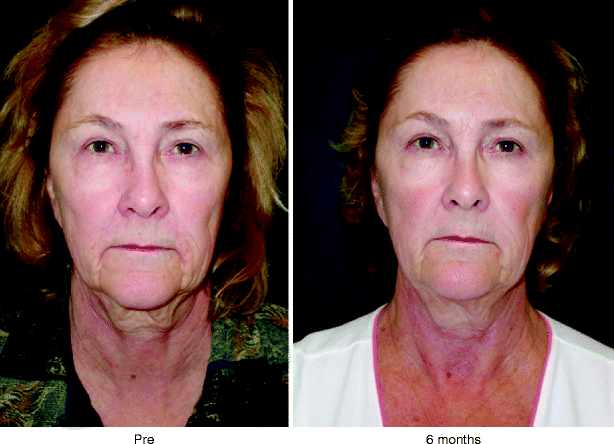
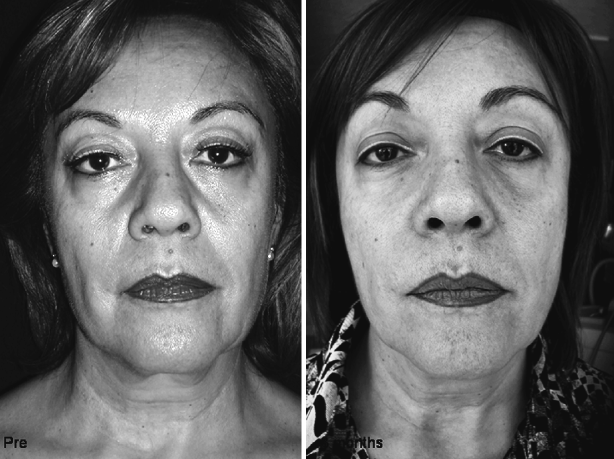
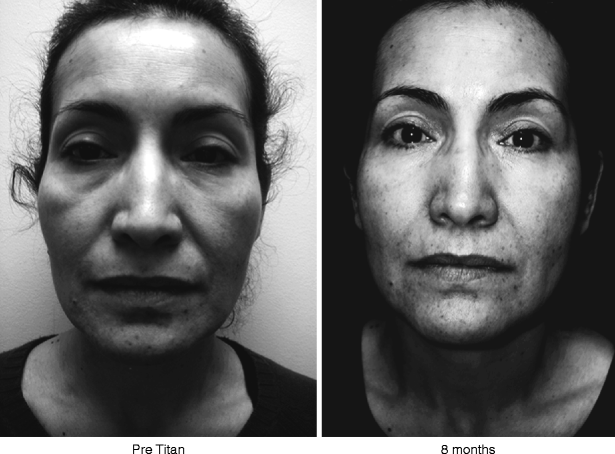
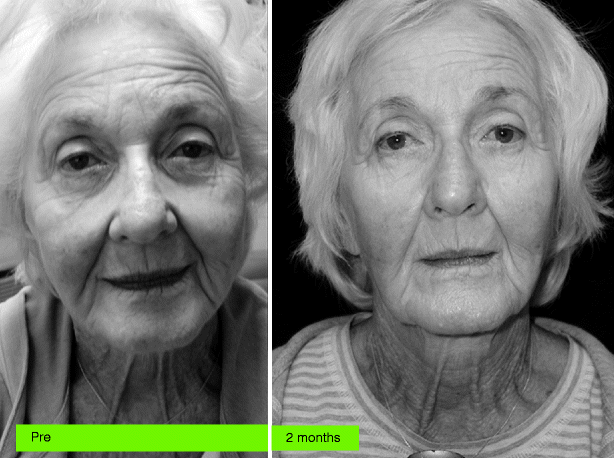
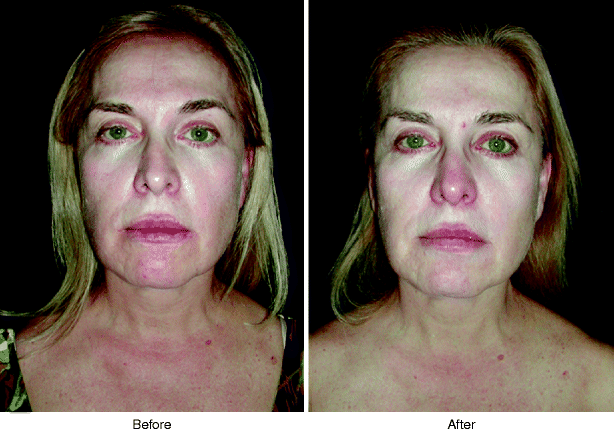
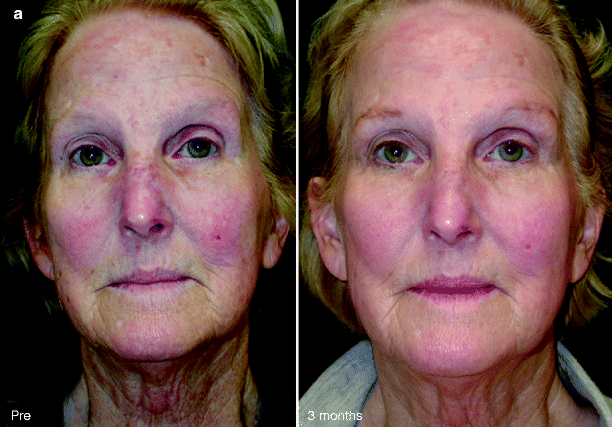
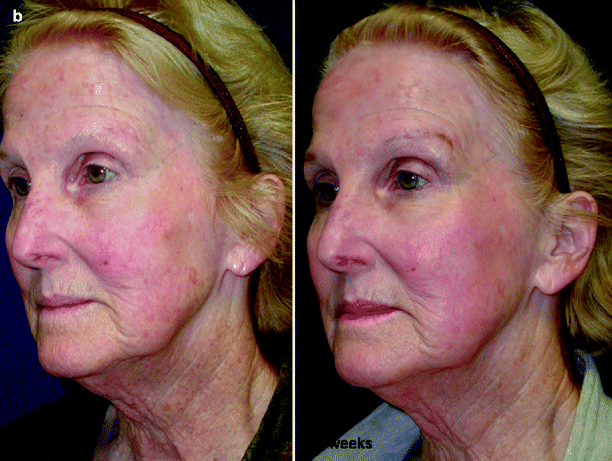
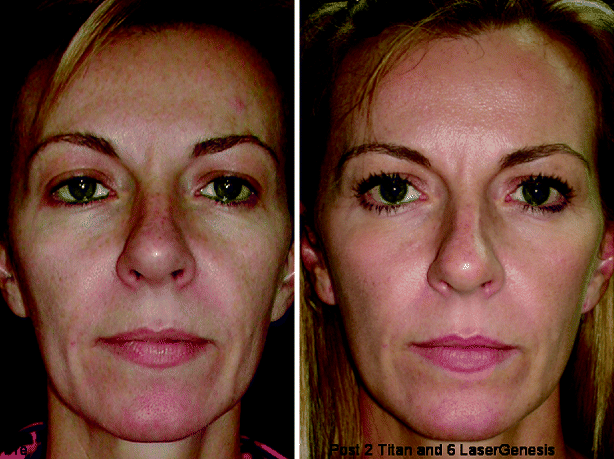
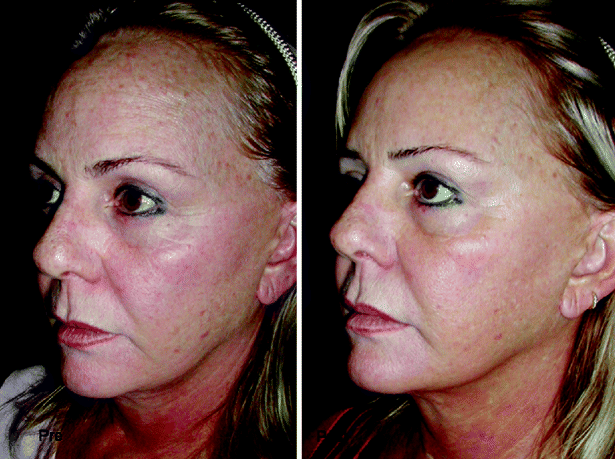
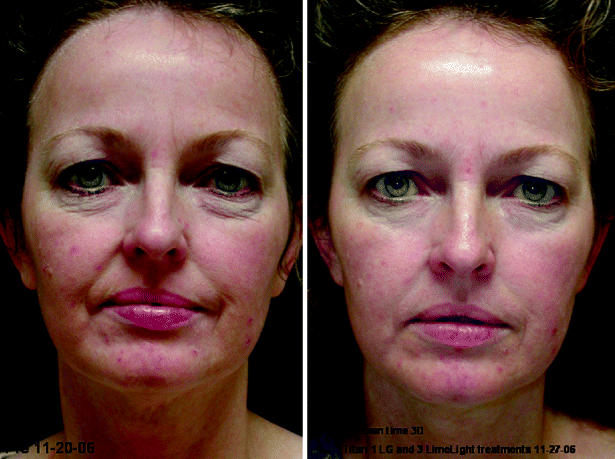

Fig. 1
Six months post one Titan treatment

Fig. 2
Six months post one Titan treatment

Fig. 3
Eight months post one Titan treatment

Fig. 4
82 year old woman before and 1 month post a single Titan treatment

Fig. 5
One month post one Titan treatment


Fig. 6
(a) Three months post one Titan 3 Nd:YAG showing better skin quality and (b) in lateral view

Fig. 7
Pre and 6 month post combination treatment Titan plus Nd:YAG

Fig. 8
Pre and post one Titan and 5 Nd:YAG

Fig. 9
Seven days after combination treatment of one Titan, 3 Nd:YAG and 5 IPL
On the other hand, we have gradually improved our understanding of how skin tightening takes place and how it can be induced painlessly and immediately using light. A long way has passed since we were trying to elicit a change using flash intense heating with radiofrequency. In a similar manner, when we use the Nd:YAG laser as later described, a change in skin quality is first noticeable after only a few days when treating the mid layer with laser, and there is even a change that is noticed immediately: pore size reduction. Dyschromias will also improve within a matter of days, again using light, intense pulsed light. So, all in all, these change account for an excellent acceptance level for the vast majority of patients who undergo these treatments, provided we have outlaid a plan of treatment and of expected level of improvement in all detail prior to starting the series and never a posteriori.
Photoaging in the Deep Stratum of the Skin Causing Skin Laxity Can Be Treated with Light
Skin tightening can best be induced using long, gradual, sustained multi second pulses of heat If the tissue is heated in this manner, it can be done painlessly Immediate skin tightening is observed in nearly all patients regardless of age or skin type |
For the purpose of this writing we will limit ourselves to the mid and lower thirds of the face and neck. Unwanted skin flaccidity starts at variable degrees for individual patients during the third decade of life. Jowls, loss of sharpness in the mandibular lines, laxity of cheeks and deepening of the nasal-labial fold individually or collectively may appear. The traditional approach years ago, was that of a rhytidectomy or face lift. The problem was that this procedure, alone, corrects by pulling the lax skin following one vector of movement, causing in some cases, distortion of landmarks of the face such as the corners of the mouth. Inducing skin contraction by delivering deep, sustained heat to the deep dermis, aims to cause a minute global shrinking, that will revert the skin to its original position to some degree. Achieving that with light, requires a source of heat that can be on for extended periods of time and that does not cause pain on contact with the skin. In other words, a long pulse of light, and cooling of the treatment surface of the device, the one that gets in contact with the surface of the skin while the light is on. The light must have a wavelength which allows for penetration to the level of the target, i.e.,: the deep reticular dermis. The closest to such a device is Titan® by Cutera, Inc.
Stay updated, free articles. Join our Telegram channel

Full access? Get Clinical Tree








